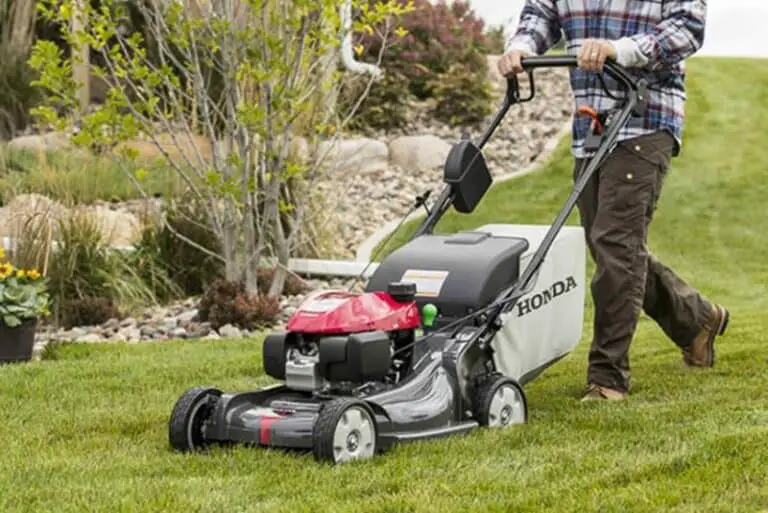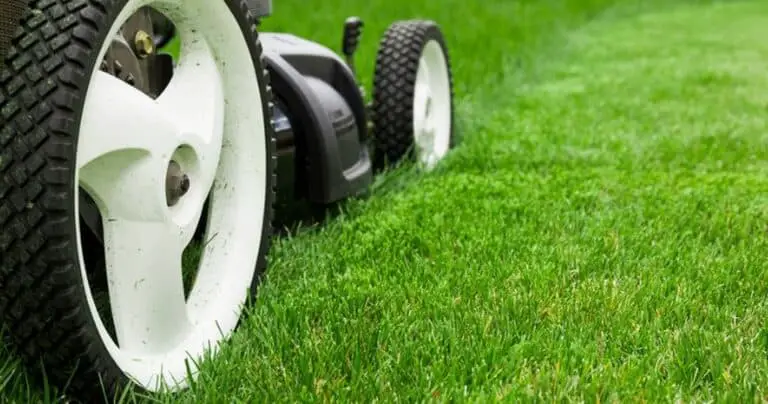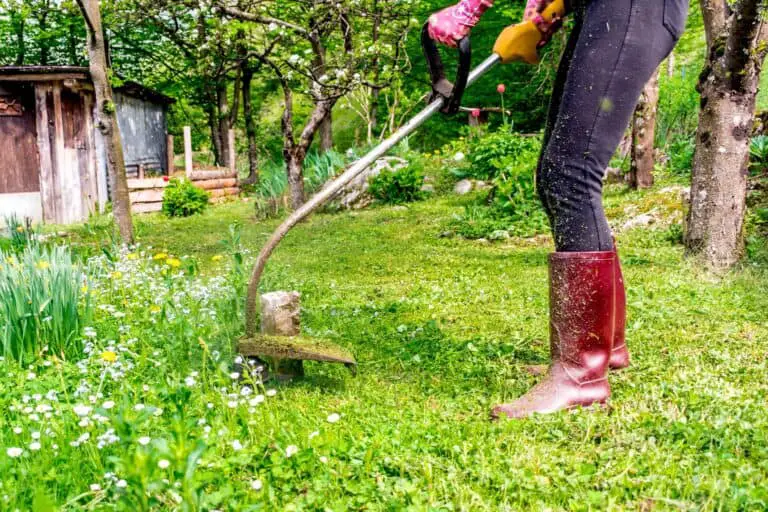Forestry Mulching and Land Clearing: The Complete Guide
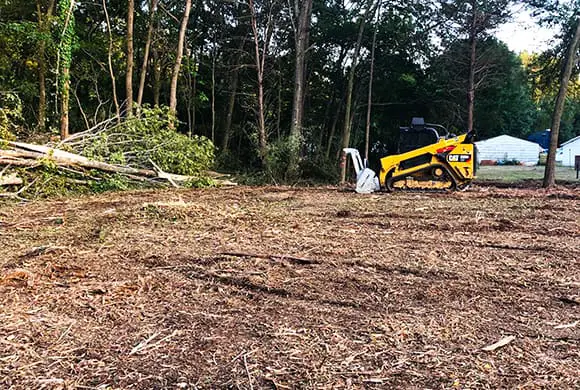
When you think of land clearing, what comes to mind? Maybe you imagine someone with a bulldozer clearing land and pushing down trees and stumps. Or maybe you think of workers using chainsaws to cut down large trees. This is what is known as traditional land clearing.
Traditional land clearing is a process that has been used for centuries. It involves cutting down trees and removing stumps to make way for new construction or agriculture. This method can be expensive and time-consuming, and it can also damage the environment.
Forestry mulching is a newer technology that has been gaining popularity in recent years. It involves using a machine called a mulcher to chop up trees and stumps into small pieces. This method is much more efficient than traditional land clearing, and it also causes less environmental damage.Sometimes forestry mulching and land clearing are used interchangeably, causing confusion. No need to worry. In this article, we will explain the difference between forestry mulching and traditional land clearing. There are benefits and limitations between the two.
What Is Land Clearing?
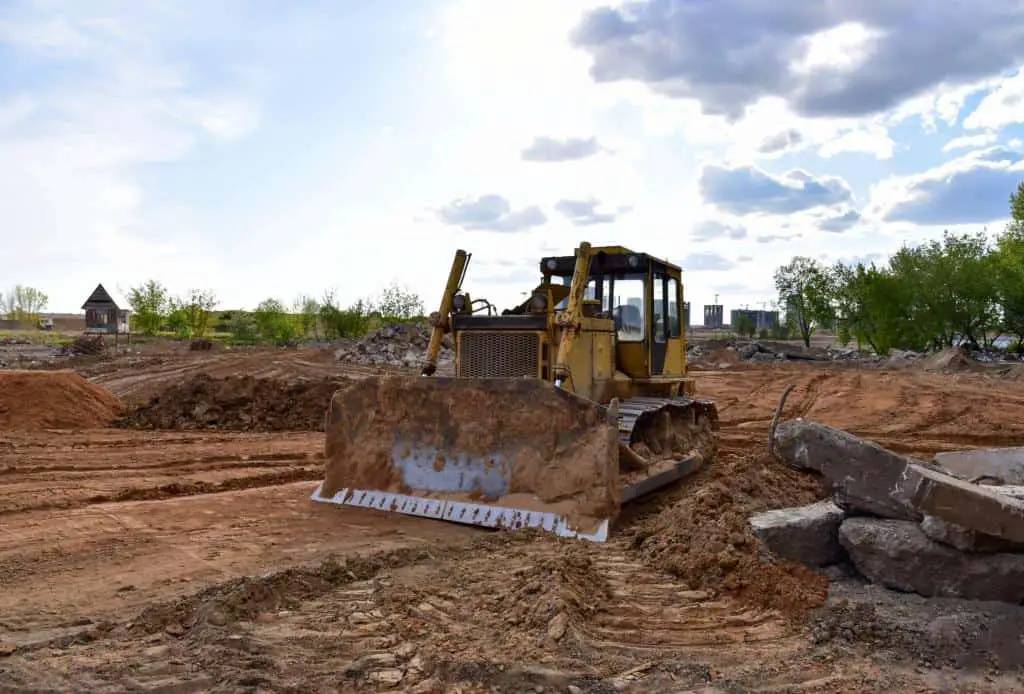
Land clearing has been an integral part of human activity for centuries. Land clearing is the process of removing trees, plants, and debris from an area of land.
There are a number of reasons why people might choose to clear land. They might want to use the land for farming, ranching, or mining. They might want to build a house or a factory on the land. Or they might want to use the land for something entirely else.
There are a number of ways to clear land. Land clearing can be done manually or through the use of machines.
Land clearing can be done in a variety of ways, including cutting down trees and brush, raking debris into piles, and burning debris. One way is to simply cut down all the trees and then burn them. This is called slash and burn agriculture.
Later on, in history, plows were used to turn up topsoil in preparation for planting. In the late 19th century, people developed steam-powered tractors. This technology brought mechanized farming, like plowing.
In the early 20th century, a number of changes occurred that affected land clearing practices. The development of the use of tractors, with their engine power, in the early 1900s. The popularity of these tractors led to a number of changes in land clearing methods. This led to the use of other equipment in farming, such as the harvester.
A lot of changes were made to how land was cleared after these machines were used. This led to the use of other equipment in farming, such as the harvester. Another way is to use heavy machinery to remove all the trees and vegetation. This is called clear-cutting.
What Is Forestry Mulching?
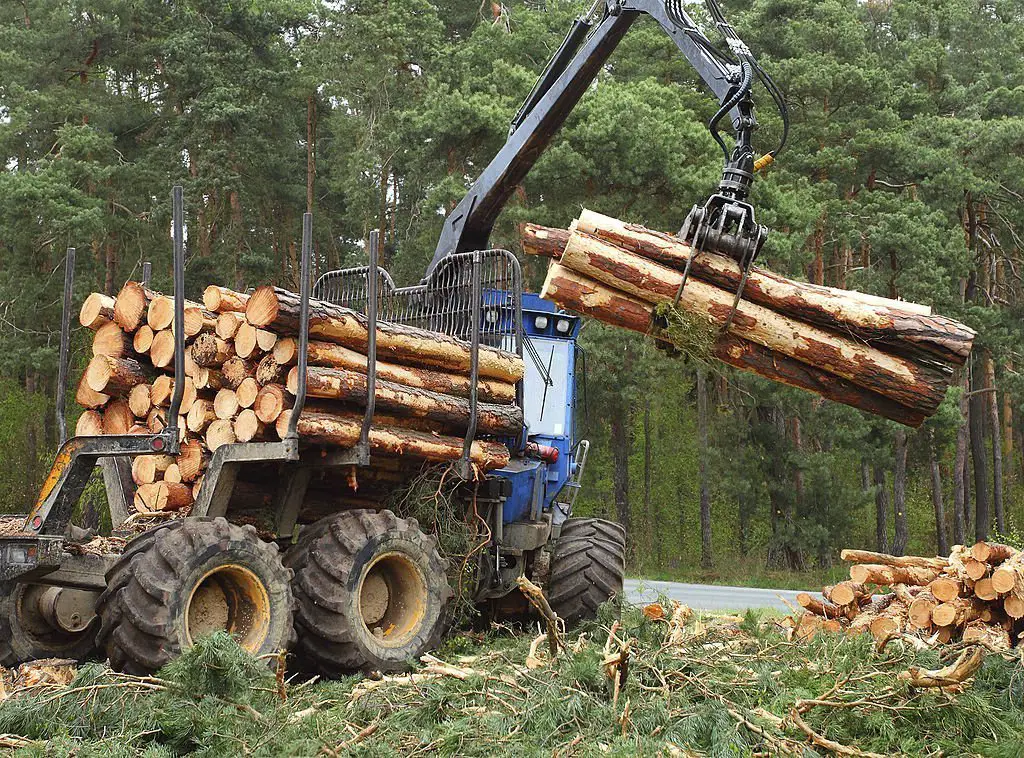
Forestry mulching is a modern forestry practice. It uses a heavy machine to chop and distribute wood chips or other debris over an area of the forest floor.
A machine is used to shred and mulch trees and other brush in a forest or woodland area. Mulching machines can be either towed behind a truck or mounted on a tractor.
They use rotating blades to chop up the trees and branches, and then a conveyor belt or blower system blows the mulch away from the machine
The purpose of forestry mulching is to mimic the natural process of fallen leaves and branches rotting on the forest floor. It then protects the solid from erosion. This encourages new growth, helps retain moisture in the soil, and fights erosion.
Forestry mulching also improves the health of the forest, makes it easier to navigate, and reduces the risk of wildfires.
Is Forestry Mulching and Land Clearing the Same?
Forestry mulching is part of land-clearing method in general. Forestry mulching uses a single machine to precisely cut trees, shrubs, and vines. It clears unwanted vegetation and leaves a fine, functional, and attractive mulch layer.
Land clearing with a mulcher is much cheaper and faster than traditional methods such as bulldozing or burning. Mulching is also more environmentally friendly because it does not produce emissions like bulldozing or burning do.
Differences Between Forestry Mulching and Traditional Land Clearing (Table)
In the table below, we summarize the differences between forestry mulching and traditional land clearing.
| Forestry Mulching | Traditional Land Clearing | |
| Process | Single-step process | Multi-step process |
| Equipment | One piece | Many: Excavators, bulldozers, haul trucks, etc |
| Effect to soil | Preserves and builds topsoil layer. Low ground pressure preserves soil structure | Damages and dislocates topsoil layer. High ground pressure results in soil compaction |
| Effect to erosion | Creates natural erosion control | Requires additional erosion control (silt fencing and catch basins) |
| Depend on weather | Workable in wet and/or snowy weather | Highly weather dependent |
| Burning/Chipping/Hauling | No | Yes |
| Windrows and/or Brush Piles | No | Yes |
| Biomass | Recycled | Discarded |
| Soil fertility | Increased | Reduced |
| Damages nearby trees and vegetation | Selective | Yes |
| Visually | Appealing | Unsightly scarred appearance |
| Sustainable | Yes | No |
| Cost | Less expensive | More expensive |
What Are the Benefits of Land Clearing?
Land clearing has many benefits. It increases property values, improves safety, and enhances wildlife habitats.
1. Increase The Value Of Property/Land.
One of the main benefits of land clearing is that it increases the value of the property. When an area is cleared of trees and underbrush, it opens up the view and makes the property more appealing to buyers. In addition, cleared land is easier to work with and can be used for a variety of purposes, such as farming or building.
2. Prevent Fire Hazard
Another benefit of land clearing is that it improves safety. Removing trees, underbrush, and invasive plants helps reduce the risk of wildfires spreading out of control. Fire threats can also come from dead vegetation, rotting tree stumps, and others.
3. Improve safety
It’s not just the fire risk that makes dry, rotting wood dangerous. Falling tree limbs from trees that are dead, partially dead, or dying have the potential to cause injury to a person or damage to property.
Living trees can contract viruses carried by the wind, which can infect them and ultimately lead to their death. Therefore, it is in everyone’s best interest to remove dead trees as quickly as possible. In addition, they have the potential to release pollen. Pollen is a well-known irritant for people who suffer from asthma, allergies, and other respiratory conditions.
4. Improve Soil Health And Provide Habitat For Wildlife
The leveling of the land aids in the distribution of the soil. With the assistance of land clearing, the top layer is mulched appropriately. In addition to preventing soil erosion, weed control is another benefit that can be gained from mulching.
The addition of nutrients to the soil after land clearing can help improve its condition. This method is absolutely necessary for land that is used for agricultural purposes. When it comes to clearing land, farmers have access to a variety of options, including clear-cutting and slash and burn techniques.
The healthier and more vital any fruits that came out of it are likely to be, the more fertile the soil that they were grown in.
5. Stabilize The Environment
When environmental conditions are just right, the existing ecosystems flourish.It is easier to keep wild animals like raccoons, hogs, snakes, insects, and other pests away from your property. You can do this by clearing away the brush, debris, and invasive species.
In addition, if the land is not maintained properly, it can very quickly become overgrown with weeds, small trees, and grass. By removing the overgrowth, the plants you want to grow will be able to receive the sunlight and other resources they need to thrive.
6. Makes Way For Development
When you own a sizable parcel of land, the more ways in which you can put that land to use, the better. Land clearing services often add roads or paths for automobiles, all-terrain vehicles, machinery, and other vehicles.
Is Land Clearing Good for the Environment?
Many people believe that land clearing is bad for the environment. Land clearing puts fundamental pressure on the environment.
It causes the loss, fragmentation, and degradation of native vegetation. It has a variety of impacts on our soils, such as erosion and loss of nutrients. It also affects waterways and coastal regions with sedimentation and pollution.
What many people don’t realize is that land clearing actually has a positive effect on the environment.
As more and more trees are cleared, the soil starts to dry up. This means less water will be needed for farming, ranching, and mining. Less water means less pollution and more wildlife.
If a forest is cleared, the soil will be able to hold more water. This means less pollution will be left behind after the land has been cleared. Additionally, clearing the land of trees leaves it clean.
How Is Land Prepared for Forestry Mulching?
Some preliminary site preparation may be needed for a successful forestry mulching project. In order to prepare the site for the forestry mulcher to pass through, unwanted trees and vegetation that are too large for the forestry mulching machines and equipment must be removed first. This makes the area ready for the forestry mulcher.
The work preparation on the site can be done through either mechanical preparation, chemical preparation, or a combination of the two.
Chemical Preparation for Forestry Mulching
In chemical preparation, the process involves using chemical herbicides to control unwanted vegetation. We want to get rid of this vegetation because it might be in competition with seedlings that have been planted.
This chemical preparation method is frequently selected as the solution. The reason is usually because of concerns about cost and site damage. Difficult terrain conditions may make mechanical preparation challenging; hence, chemicals are used.
Chemical preparation is usually cheaper and less likely to harm desired trees and plants than mechanical preparation. On the downside, the chemical may not kill larger trees and shrubs.
There are two different ways that chemicals can be delivered: by air or on the ground.
Mechanical Preparation for Forestry Mulching
Mechanical preparation takes longer and costs more compared to chemical preparation. It is used to solve physical problems such as leftover debris, inadequate drainage, soil compaction, and rutting. Big equipment, such as bulldozers and skidders, are used to remove the physical vegetation and debris.
Using this method may have some disadvantages. It potentially disturbs the soil. There is a higher risk of harming vegetation that we wish to preserve.
In areas where environmental concerns make chemical preparation problematic, using mechanical preparation may be the best option. Nevertheless, that’s not always the case. Mechanical preparation can also produce physical results that chemical preparation cannot.
How Much Can a Forestry Mulcher Clear in a Day?
Forestry mulchers are able to clear large areas of land in a relatively short amount of time. The size and complexity of the project will determine how much land a forestry mulcher can clear in a day.
It’s difficult to provide answers to this issue without understanding the specifics of the conditions you’re working in and the equipment you’re using to clear them.
Are you using skid steer for forestry mulching? How big is the size of the skid steer attachment, for example? Or are you using a self-propelled mulcher? What is the diameter of the mulcher you’re using? Do you merely need to clear brush, or do you also need to remove leftover vegetation, such as tree stumps, heavy branches, and short grass. Do you need to grind down stumps? Do you usually make a single pass throughout the area you’re serving, or do you make many passes to get a finer product?
As previously stated, there are a variety of factors that could provide insight into this problem. The tools you use in the field determine how much you can clear in a day.
Generally, a forestry mulcher can clear between 1 and 5 acres per day. In addition to clearing land, forestry mulchers can also be used to compact soil in areas that have been cleared. However, this method is not recommended for use on extensive sites.
What’s the Cheapest Way to Clear Land?
When it comes time to clear land, there are a few different ways to go about it. You can use heavy machinery, like bulldozers and excavators, which can be expensive to rent or buy. You can also go with hand tools, which can be the cheapest way to clear land.
Hand tools require more work and elbow grease, but they’re also more versatile and can be used for a wider variety of tasks. If you’re clearing a small piece of land or doing light landscaping work, hand tools might be the best option for you.
What Tools or Equipment Are Used for Clearing Land?
Clearing land is often a necessary step in the development of a property. However, many people do not know how to go about clearing land and may not be aware of the options available to them. We will discuss the different methods available for clearing land. Also, it will provide some tips on how to choose the right method for your needs.
1. Excavator
Excavators are essential for site preparation of construction sites. They are one of the most frequently used pieces of equipment for land clearing. This machinery is perfect for land-clearing operations of any size. It has power, versatility, and stability. It’s great for areas with diverse vegetation and terrain. You have to choose the perfect excavator size for your land clearing project and meet your budget.
2. Bulldozer
The most common method of clearing land is by using a bulldozer. A bulldozer can be used to clear trees and other vegetation. Bulldozers can remove stumps quickly and efficiently. It can also be used to level the ground and prepare it for construction. However, a bulldozer can be expensive to rent and may not be suitable for all types of terrain.
3. Chainsaw
Another option for clearing land is to use a chainsaw. A chainsaw can be used to cut down trees and remove stumps. It can also be used to level the ground and prepare it for construction. Chainsaws are relatively inexpensive to rent and are easy to use, but a chainsaw may not be appropriate for all types of terrain.
4. Mattock
If you want to clear land quickly, another option is to use a mattock. A mattock is a tool that looks like a pickaxe with a long, heavy handle and a flat blade. The blade can be used to dig through the ground. When used properly, the mattock can create holes in the ground up to 5 inches deep. The downside of using a mattock is that it takes more time to use than a chainsaw.
5. Edgar
The next type of equipment you may want to rent for clearing land is an edger. An edger is a tool that looks like a curved blade on the end of an extension pole. The blade is used to create a clean edge on the ground. An edger can be used to shape the ground around plants, trees, and shrubs.
Final Thought
In conclusion, forestry mulching and land clearing are both great ways to clear land for various purposes. Forestry mulching is a more environmentally friendly option. Land clearing can be used for a variety of reasons, including creating new farmland.
As we’ve already covered, forestry mulching involves grinding and shredding tree stumps, branches, and other leftover vegetation into small, fine bits. Land clearing has been a bigger activity and includes forestry mulching.
No matter which option you choose, make sure you consult with an expert to get the most out of your land clearing project.

